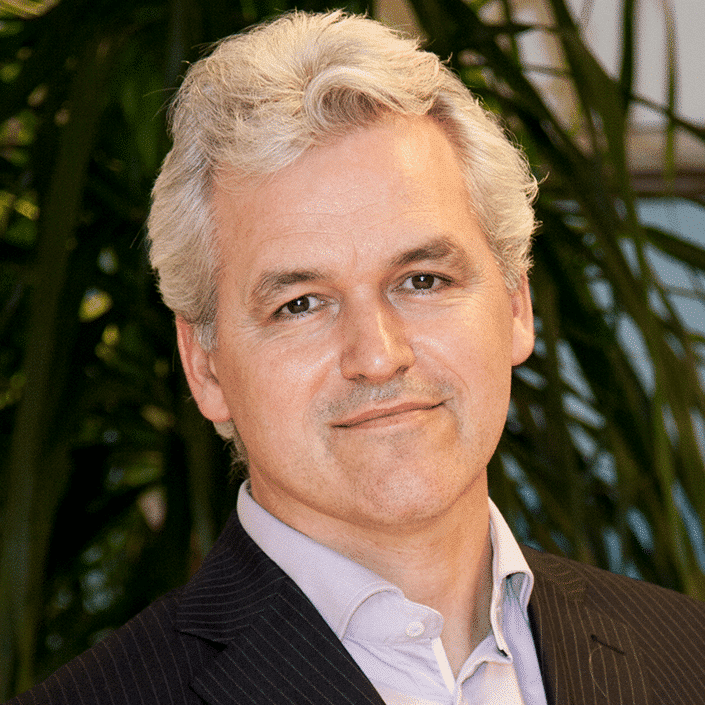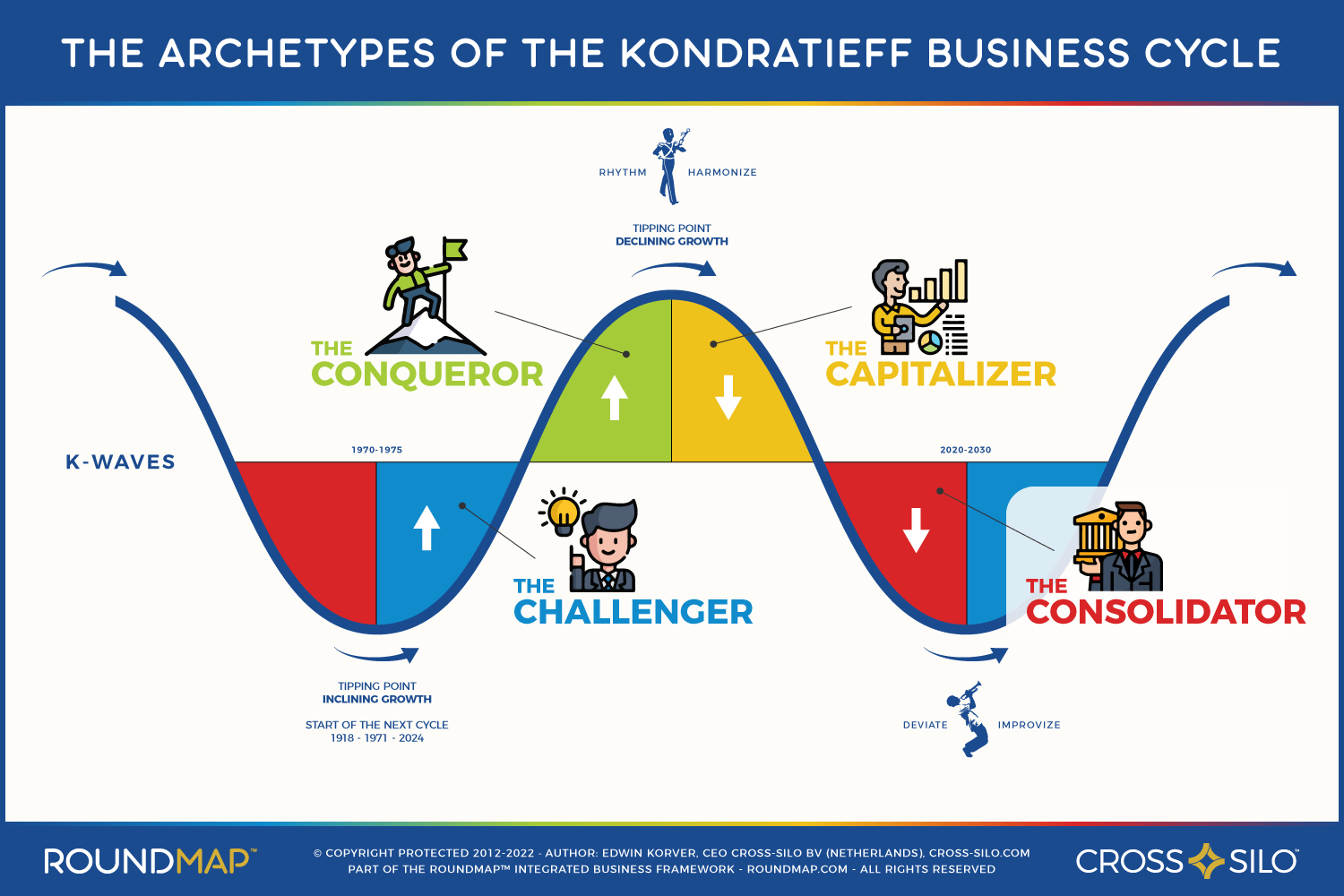In today’s era of high volatility, uncertainty, complexity, and ambiguity (VUCA), traditional leadership approaches, which thrive under stable conditions, are often inadequate. This unpredictable environment necessitates an agile leadership framework that can adeptly navigate and respond to these ever-changing conditions.
We introduce Conditional Leadership, a dynamic model designed to empower leaders to manage and lead effectively amidst the challenges of a VUCA world. This approach is pivotal for guiding organizations successfully through the unpredictable landscapes of modern business.
Leadership During a Crisis
Reflecting on the pandemic’s challenges, it became clear that modern leadership styles falter under sudden, severe crises like a dramatic revenue drop. In such scenarios, leaders instinctively take control, swiftly making tough decisions to navigate the crisis. While this switch may seem apt due to urgency and the leader’s expertise, relying solely on a singular ‘Great Man’ approach might not always yield the best outcomes.
Conditional Leadership goes beyond merely adaptively aligning leadership styles to prevailing conditions. It encompasses understanding and tracking cyclical events, preparing for changing conditions through proactive scenario planning and fostering organizational resilience, agility, and versatility. This approach enables leaders to anticipate shifts, adapt strategies effectively, and maintain a robust stance in the face of adversities, ensuring sustained success and adaptability in a dynamic business environment.
PS. Hersey’s Situational Leadership® method is recommended for task-specific readiness, complementing the broader scope of Conditional Leadership in fostering versatile, effective leadership.
Definition of Conditional Leadership
Conditional Leadership enhances performance readiness by anticipating changes that could impact the business internally and externally. It’s not a leadership style; it’s a strategic approach to building high-performing systems in an environment where change is inevitable.
This method involves having a strategic playbook for mitigating adverse effects or capitalizing on positive changes while understanding system gaps, constraints, and interdependencies. It emphasizes the importance of context in decision-making and the ability to adapt leadership styles as conditions change. Conditional Leadership integrates creating a compelling vision, agile strategy, inspiring trust, and ensuring the right talent is in place for future success.
Sources of Information
To effectively prepare for changes in conditions, a leader can rely on various sources of information:
- Market Analysis Reports
Provides insights into industry trends, consumer behavior, and competition. - Risk Assessment Tools
Helps identify and manage potential risks. - Scenario Planning Workshops
Facilitates strategic thinking for different future scenarios. - Regulatory Updates
Keeps track of changes in laws and regulations. - Technology Trend Publications
Offers updates on emerging technologies and their potential impact. - Financial Forecasts
Assists in anticipating and preparing for economic fluctuations. - Employee Feedback Mechanisms
Gather internal insights and perspectives. - Customer Surveys and Feedback
Understand changing customer needs and preferences. - Global News Sources
Offers a broader perspective on political, economic, and social changes. - Professional Network Insights
Leverages the knowledge and experience of peers and industry experts. - Industry Conferences and Seminars
Gain insights into industry developments and networking opportunities. - Academic and Research Publications
Stay informed on the latest research findings relevant to your industry. - Government Economic Reports
Provides data on economic indicators and policy changes. - Business Cycle Analysis
Helps in understanding and anticipating phases of economic cycles. - Competitor Analysis Tools
For monitoring competitors’ strategies and market movements. - Sustainability Reports
Understanding environmental and social impacts relevant to the business. - Technological Development Workshops
Staying abreast of technological advancements and training. - Political Analysis and Commentary
For insights into potential political changes following elections or policy shifts. - Supply Chain Monitoring
Keeping track of supply chain vulnerabilities and opportunities. - Crisis Management Training and Simulations
Prepares leaders and teams for potential crises.
These sources provide comprehensive information to adapt and respond effectively to changing conditions.
Fallacies
Beware, fallacies can significantly influence our perception of reality by shaping how we interpret and understand various conditions. The Great Man Fallacy, the Closed System Fallacy, and the Whole System Fallacy can skew our understanding of complex systems and processes. Recognizing and challenging these fallacies is crucial for a more accurate and comprehensive worldview.
- Great Man Fallacy: the belief that history is shaped primarily by the actions and decisions of great individuals, underestimating the influence of broader societal, cultural, and environmental factors.
- Closed System Fallacy: the assumption that a system is self-contained and unaffected by external factors, ignoring the influence and interplay of external elements and environments.
- Whole System Fallacy: the belief that we can fully perceive and understand the entirety of a complex system, disregarding the fluidity of its boundaries and the impossibility of capturing all its elements and interactions.
Be Prepared or Brace for Impact
The alternative to being unprepared for change is like navigating a crisis blindly, akin to a scene from the 2012 movie “Flight.” In such “Brace for Impact” scenarios, organizations, and leaders face unexpected challenges without plans, leading to significant emotional and social stress. Decisions are made hastily, often lacking a solid factual basis. This approach can result in suboptimal outcomes, missed opportunities, and potentially catastrophic consequences, underscoring the importance of proactive preparation and adaptive leadership.
Navigating Business Cycles
In addition to unexpected events like pandemics, specific predictable forces such as the business cycle, specifically the Kondratieff cycle or K-wave, shape economic conditions. This roughly 53-year cycle, driven by technological advancements, is supported by economists like Nikolai Kondratieff, Joseph Schumpeter, and Carlota Perez.
The current phase of the K-wave suggests an economic downturn due to the maturation of products and business models from the ’60s and ’70s. Recognizing these long-wave conditions is vital, and preparing for the final stage of the business cycle can be effective.
Business Cycles: Facing Technological Disruption
Today’s products and business models simultaneously decline because they all come from inventions in the sixties and seventies. It is, therefore, no surprise that many boards are looking for a CEO who can steer the company away from the path toward demise, even though they are often unaware of the dynamics of business cycles.
Another way of dealing with a steep decline in revenue is to appoint an outsider to help turn around the business, as IBM encountered when the company incurred the biggest corporate loss in history.
Kodak, on the other hand, was convinced that their competitive advantage (making the highest-quality film) would protect their main revenue streams because of the high cost of market entry. However, they failed to appreciate the change in external conditions: due to the exponential rise of mobile networks, the adoption of camera-equipped smartphones, and the popularity of social networks, customer behavior had shifted from printing photos offline to sharing pictures online. Kodak lost 75% of its revenue in a few years, mostly in favor of Instagram.
Other market leaders like Blockbuster and Blackberry completely underestimated the industry’s capacity to increase bandwidth and the speed of mobile connections, creating the perfect conditions for Netflix and Apple to thrive. Additionally, Nokia, Blackberry, and Microsoft had long ignored signals that users strongly preferred touchscreens, allowing Google and Apple to take the lead.
If only leadership had known about these conditions, things could have developed in their favor. Alas.
Leadership Cycles: Matching Styles to Stages
Understanding the long-wave business cycle reveals that each stage favors a different type of leader. As startups mature, their leadership must evolve through distinct phases. Initially, an inventive type is ideal during the Irruption phase, followed by a marketing or sales-focused leader in the Frenzy stage. Then, an accountant or efficiency-focused individual leads during the Synergy phase, and finally, a merger and acquisition specialist or change agent takes the helm in the Maturity stage.
Each period requires a unique leadership style, whether inspirational, performance-driven, cost-effective, or focused on maintaining operations while preparing for significant changes or transitions.
Similarly, in 1983, Neil C. Churchill and Virginia L. Lewis published an article on HBR of business growth, particularly for small businesses. The authors identified five stages of growth, from birth to maturity, with five general types of management styles:
Business Cycles: Effective Change Management
Following our previous discussion, change management is about adapting to the conditions. The practice of change management is a relatively young discipline, starting with a paper by Julien R. Phillips of McKinsey, first published in Human Resource Management (1983).
Phillips’ work later inspired other approaches, such as Kotter’s 8-step and the Prosci ADKAR models.
Phillips wrote in 1983:
“Until recently, most companies operated in reasonably stable environments. Their major challenges were to deploy their resources and exploit their capabilities as effectively as possible within these stable environments.”
Although this was 1983, and since we’ve almost progressed a complete cycle, leaders are now facing similar challenges. Phillips continued with,
“But today, many companies face unstable competitive environments that are often changing profoundly. The dramatic reduction in domestic and international economic growth has shifted the primary competitive battle from shares of new or expanding markets to survival shares of slow-growing markets.”
Again, history tends to repeat itself. Phillips concluded by stating:
“Thus, many companies are finding it necessary today to drastically change what they are trying to do and how they are doing it to continue to be successful. Bringing about such organizational change by devising different kinds of strategies and operation patterns creates a much greater managerial challenge than simply continuing to perform well within established strategies and operations, and it is a challenge for which few senior managers have much relevant experience.”
Finally,
“It requires greater environmental sensitivity, imagination, and a different kind of leadership than continuing to operate well in a stable environment.”
There you have it. In 1983, McKinsey knew that change leadership hinged on understanding and interpreting the internal and external conditions (‘environmental sensitivity’, which today is described as ‘market intimacy’).
Phillips believed this new style of leadership could be learned:
“The challenge of managing such fundamental organizational change can be met successfully, but first it must be understood.”
It is no coincidence that Peters and Waterman of McKinsey published their bestseller In Search of Excellence in the same year. The authors described how some companies outperformed others in innovation and creativity because leadership allowed small groups to launch new ideas despite the formal structure and linear thinking.
Styles of Leadership
This is a short list to give you an idea of the various types of leadership:
Visionary leadership is the ideal management style to use when a business leader needs to introduce a new concept or new direction to current staff. With this technique, business leaders can inspire employees by presenting them with a powerful and progressive future outlook. To be successful with this method, leaders must make a strong connection with their team to earn their commitment. This can be achieved by creating unity and focusing on how important their team is to helping the organization achieve the new agenda or direction.
Coaching leadership involves honing a staff member’s individual talent so that they can develop their experience and expertise within their industry or field. With this approach, the leader’s goal is to identify the key skills of its employees and instill knowledge to help further develop the candidate’s career. To be successful with this approach, leaders will need to possess a strong understanding of each team member’s strengths and weaknesses, as well as their inspirations and motivations. This can be achieved by taking the time to get to know their staff and asking strategic questions surrounding their perceived strengths and what they feel they need to be successful.
Affiliative leadership is used to nurture workplace morale, helping staff members reconnect with their organization and their peers. This leadership style focuses on the group as a unit; however, it is important to hold each employee accountable for their role in the team re-building process. When morale is low, some workers need more motivation than others to encourage them to invest their hearts into rebuilding workplace relationships.
The democratic leadership style involves soliciting group opinion to help find the solution to a difficult problem. The democratic leadership style tallies the staffs’ opinions for a possible solution, which is then presented to the organization’s leadership who makes the final decision. When business leaders include staff in the decision-making process, staff members are more likely to offer genuine support for the agenda, because they helped to devise the plan. The democratic leadership style is not appropriate for dealing with business emergencies.
The pacesetting approach requires setting performance standards and holding team members accountable for meeting those goals. Although performance can be measured based on quantifiable metrics, it is especially important for leaders using the pacesetting approach to understand and consider all possible factors that can influence performance. Additionally, the pacesetting method should not be overused, as it can lower staff morale when they do not achieve the goals.
The autocratic leadership style is primarily the traditional boss-worker structure, where management makes a majority of decisions and workers do what is asked of them. An advantage of this method is that companies and organizations are able to execute their vision in an efficient and effective manner. A great example of when this leadership style is appropriate is for extremely complex projects – such as construction – where conformity is necessary for worker safety and project completion. However, if an autocratic leadership style is used inappropriately, workers may become extremely dissatisfied and can feel as though they provide little to no value.
Modeled after the military, the commanding leadership style is similar to the autocratic leadership style but involves no input from subordinates. The commanding method of leadership has long been known as the style used in a time of crises when there is no time for leadership to explain what is happening but immediate action is necessary. In the daily workplace, this is the most ineffective leadership style, as there are rarely daily crises and workers enjoy understanding what they are doing, as well as having a say in work-related projects and situations.
The laissez-faire leadership style involves leadership empowering staff with minimal directives. With this style, leaders often provide their staff with the tools needed to complete their work, and as appropriate, let staff resolve issues on their own. Although this method results in the highest job satisfaction rating, the success of the style can be largely dependent on the composition of the team and specific to highly skilled and motivated staff members.
The bureaucratic leadership style relies on the positions individuals hold within their organizations and businesses to definitively outline their responsibilities, rules and regulations within the organization. An advantage of this leadership style is that it is highly efficient and controllable. This is due to the fact that bureaucratic leadership can be thought of as a system with several levels of management, each reporting to the level above it. The cons of this style are that it is quite hierarchical, and workers or managers on the lower level have a difficult time expressing good ideas or input to those in charge, as they often have to travel through a vast chain of management.
With servant leadership, people are the most important business component and their needs are key priorities. This leadership style focuses on the concept that a satisfied team will produce good work, and it works best when coupled with other, more authoritative, leadership styles. When using servant leadership, it is important to consider whether this style is appropriate for the organization’s corporate culture.
Depending on the circumstances a business leader is dealing with, they may need to incorporate different leadership styles to move their organization forward, especially as organizations face growing complexity and ongoing change. Whatever styles business leaders use, it is important to remember to apply the right style to the right situation to help enhance employee performance and morale.
Sources:
10 Different Types of Leadership Styles ─ Norwich University
Leadership Styles – Choosing the Right Approach for the Situation ─ Mind Tools
Leadership Styles – Management ─ The Wall Street Journal
6 Leadership Styles And When You Should Use Them ─ Fast Company
Author
-

Edwin Korver is a polymath celebrated for his mastery of systems thinking and integral philosophy, particularly in intricate business transformations. His company, CROSS/SILO, embodies his unwavering belief in the interdependence of stakeholders and the pivotal role of value creation in fostering growth, complemented by the power of storytelling to convey that value. Edwin pioneered the RoundMap®, an all-encompassing business framework. He envisions a future where business harmonizes profit with compassion, common sense, and EQuitability, a vision he explores further in his forthcoming book, "Leading from the Whole."
View all posts Creator of RoundMap® | CEO, CROSS-SILO.COM

![Conditional Leadership: Mastering Adaptability in a Dynamic Business World 1 ROUNDMAP_Slide_Conditional_Leadership_in_Business_Cycles_Copyright_Protected_2021[1]](https://roundmap.com/wp-content/uploads/ROUNDMAP_Slide_Conditional_Leadership_in_Business_Cycles_Copyright_Protected_20211.png)

![Conditional Leadership: Mastering Adaptability in a Dynamic Business World 3 ROUNDMAP_Slide_Five_Stages_Small_Business_growth_Copyright_Protected[1]](https://roundmap.com/wp-content/uploads/ROUNDMAP_Slide_Five_Stages_Small_Business_growth_Copyright_Protected1.png)


